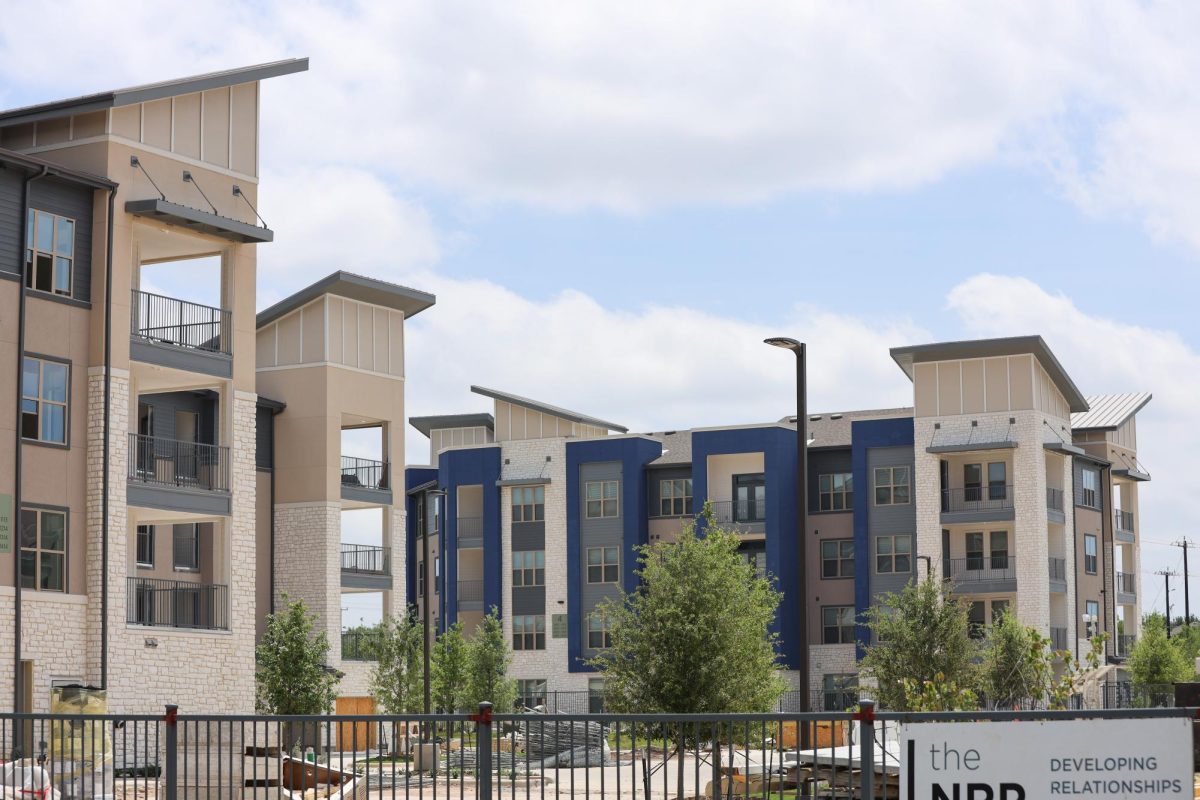“Natural gas could turn things around (economically) for communities that would literally never be able to afford going sustainable with wind and solar (energy),” said senior environmental science major Andrew Sposato when asked about the construction of the Trans-Pecos pipeline project.
The Trans-Pecos pipeline is a subsidiary operation of three companies: Energy Transfer Partners (ETE), MasTech Inc. and Carso Energy. According to the Trans-Pecos website’s home page, the project is “a Texas intrastate pipeline designed to transport 1.4 billion cubic feet per day of clean burning natural gas as part of an agreement with Comisión Federal de Electricidad, Mexico’s federal electricity commission.” While Energy Transfer Partners, LP and Mastech Inc. are based in the U.S., Carso Energy is a Mexico-based oil company, controlled by billionaire magnate Carlos Slim. This consortium of companies was awarded the construction and operation contract by Mexico’s Federal Electricity Commission (CFE) in January 2015.
Energy Transfer Partners is responsible for constructing and operating the Texas leg of the pipeline. That stretch, a 148-mile, 42-inch diameter pipeline, will originate at the Waha Hub outside Fort Stockton, Texas in northern Pecos County. The pipeline will also include delivery locations for local towns and utilities in Central West Texas and will terminate custody at the U.S.-Mexico boundary near Presidio, Texas. From Presidio, the project joins a Mexico-side pipeline at the U.S.-Mexico border approximately 12.2 miles north-northwest of Presidio. On May 5, the Federal Energy Regulatory Commission (FERC) granted the required permit authorizing the Trans-Pecos Pipeline construction on this side of the border.
That authorization has prompted opposition from activists in the region including ranchers, environmental scientists, archaeologists, indigenous people and concerned residents. An artistic display of their dissent is featured in a short video posted at dearferc.com.
Mary Lou Saxon, a Marfa resident in the Big Bend area feels that the Trans-Pecos pipeline is a dangerous project. “This area can not afford to be disturbed,” she said. “This whole area is the Big Bend, not just the national park area. You would never consider running a pipeline in that park; well, this whole area is like a park. It has avoided urbanization by some kind of miracle or the fact that it can be harsh,” she said.
“We are relatively untouched by urbanization and we may one day need this area for more mundane uses, like living, star gazing, watching the sunset, sports, clean air. People need that.”
For Saxon, Trans-Pecos compromises the rustic beauty of the area.
Before Energy Transfers could begin construction, there was an authorization process by FERC that included conducting an archaeological survey to ensure that important geography was not disturbed. Although a review of the area has been conducted and construction has begun, not everyone agrees that the survey thoroughly assessed the pipeline’s potential impact; the Big Bend Conservation Alliance (BBCA), a group that aims to protect the natural and cultural resources of Big Bend argues that “the pipeline system will also impose significant impact on cultural and historic sites and, at an estimated site density greater than one per linear mile, is already known to have resulted in the destruction of one 7500+-year-old indigenous people’s site, a system of middens, work sites and camping areas.”
David W. Keller, Senior Project Archaeologist at the Center for Big Bend Studies, who has an M.A in environmental history, also raised concerns about the nature of the survey. In 2015, he said, “I’ve been conducting professional archeological and historical research in the Big Bend region for almost 15 years; if the methods employed for this survey are indicative of those that may be carried out on other non-jurisdictional portions of the pipeline, then cultural resources along the proposed pipeline route are no better off than if they weren’t surveyed at all. It is difficult to place much faith in an archeological project if the methodology is grossly flawed.
That was the case here according to Keller. BBCA found the evidence to back Keller’s claim. According to the group, since much of the route lies along private property, little of it has been subject to pedestrian survey. The company responsible surveyed only 8.4 total miles of the 148-mile route.
The project will carry 1.4 billion cubic feet of U.S. natural gas per day to Mexico, and has no customers in Texas or the United States. Sposato, sees potential for a short-term benefit for Mexico in the project because liquid natural gas produces fewer greenhouse gas emissions than gasoline and is much more efficient than burning coal per unit of energy produced. According to Sposato, this pipeline may not be as bad as it looks to activists because of the possibility that Mexico will transition away from coal and toward natural gas.
Annual reports from The University of Texas Investment Management Company (UTIMCO) show that the UT System has significant financial holdings in Energy Transfer Partners. UTIMCO is the external investment corporation formed in 1996 that oversees investments under its fiduciary control for The University of Texas and Texas A&M Systems. In 2014, UTIMCO reported $104.4 billion in holdings and 180,999 shares in ETE. Additionally, the report shows holdings in two companies wholly owned by ETE, Regency Energy Partners and Sunoco Logistics Partners. UTIMCO holds a $8.3 million investment from Regency Energy Partners and a $6.97 million investment from Sunoco Logistics Partners. UTIMCO also holds shares of stock in those companies: 257,643 and 147,928 shares, respectively.
Further, Kelcy Warren, CEO and Chairman of Energy Transfer Partners, LP, serves on UT System Chancellor McRaven’s Executive Council.
The Big Bend Conservation Alliance has outlined the connections between the UT System and oil extraction on their website in a section titled “Conflicts of Interest in the University of Texas System.” The page features links to a petition started by the group Environment Texas that calls on Chancellor McRaven to discontinue investing in companies that frack for oil and to cease leasing university land for extraction projects. The leasing of university land generates approximately $600 million dollars a year
Last month, activists in Alpine, Texas marched in solidarity with the Standing Rock Sioux tribe in their encampment against the construction of the Dakota Access Pipeline (DAPL) near reservation areas that encompass the borderland between North and South Dakota. Another march, organized by the Texas Environmental Justice Advocacy Service, took place in Houston last week.
Not all dissent against the pipeline has revolved around environmental concerns. According to Matt Lara, BBCA Executive Director, approximately one-third of the route’s miles were obtained from unwilling sellers through force of the courts in eminent domain condemnation proceedings. There are 39 suits spanning three counties; many are still pending in court due to the pipeline company’s protest of the damages awards.
Moreover, when the FERC application was under review, more than 1000 comments were written in opposition to the project and consequently registered on the docket for CP15-500, the Presidio Crossing Project: the so-called “jurisdictional facility associated with the Trans-Pecos Pipeline.”
One of the more anxious testimonies came from Alpine, Texas resident Elizabeth Ingels Rhodes in 2015 “Over the last 10 years I have seen two massive fires threaten Marfa and Alpine. My husband and I stood all night in our front lawn hoping and praying that the inferno burning on the horizon would not jump over the road between us and reach our home and the homes of elderly neighbors that we would have to help escape the flames. What would happen to this country and it’s flora and fauna were the 42-inch ETP pipeline to explode? Hell would have no fury like the destruction it would cause to all of us,” she said.
Under the Safety tab of the Trans-Pecos website, Energy Transfers states that they have long-standing commitments to the safety of people, the environment, property and assets. “We do this because it makes good business sense, but more importantly, it is the right thing to do,” the company said.













